North Charleston, SC Pollen and Allergy Report for Summer 2023
Pollen Allergy Trends in North Charleston, SC
When is pollen lowest in North Charleston, SC?

February
Lowest month total PPM
Avg. PPM
When is pollen highest in North Charleston, SC?

April
Highest month total PPM
Avg. PPM
How does pollen in North Charleston, SC compare to South Carolina?
North Charleston has a higher average PPM than the state of South Carolina.
North Charleston yearly avg PPM:
South Carolina yearly avg PPM:
How does pollen in North Charleston, SC compare to the USA?
North Charleston has a higher average PPM than the USA.
North Charleston yearly avg PPM:
USA yearly avg PPM:
Is pollen worse this year in North Charleston, SC?
Spring 2023 was better than spring 2022.
Spring 2023 PPM:
Spring 2022 PPM:
Average PPM in North Charleston, SC
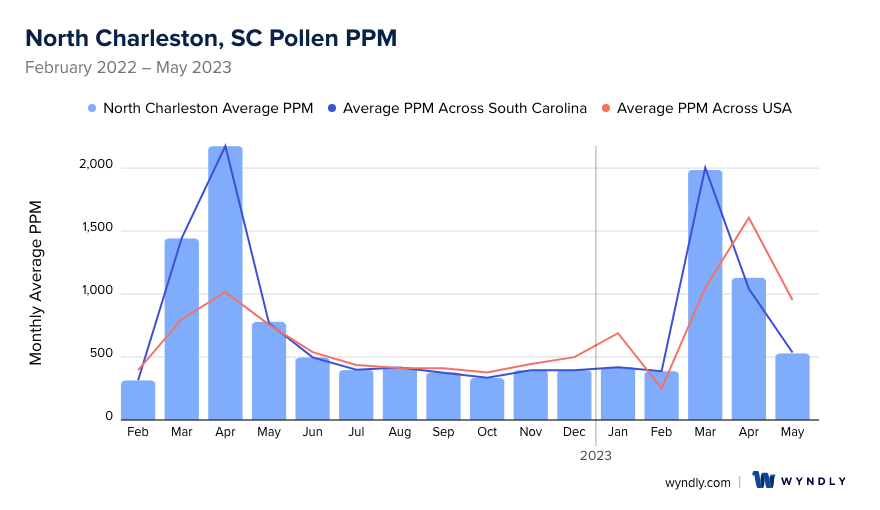
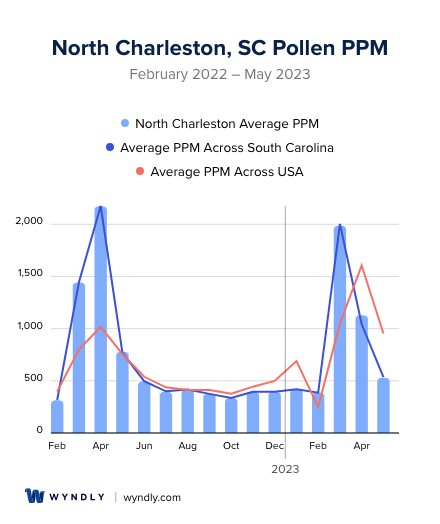
North Charleston, SC Pollen and Allergy Breakdown by Month
Grass
When is grass pollen highest in North Charleston, SC?
April has the highest grass pollen in North Charleston, SC with an average PPM of
When is grass pollen lowest in North Charleston, SC?
December has the lowest grass pollen in North Charleston, SC with an average PPM of
Tree
When is tree pollen highest in North Charleston, SC?
March has the highest tree pollen in North Charleston, SC with an average PPM of
When is tree pollen lowest in North Charleston, SC?
October has the lowest tree pollen in North Charleston, SC with an average PPM of
Weed
When is weed pollen highest in North Charleston, SC?
April has the highest weed pollen in North Charleston, SC with an average PPM of
When is weed pollen lowest in North Charleston, SC?
February has the lowest weed pollen in North Charleston, SC with an average PPM of
North Charleston, SC Pollen Monthly Breakdown by Pollen Type
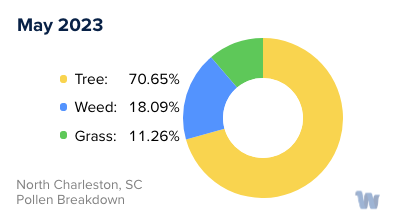
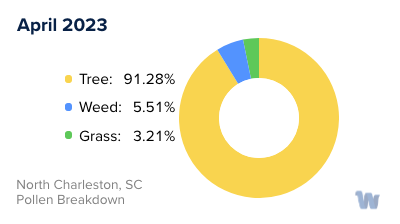
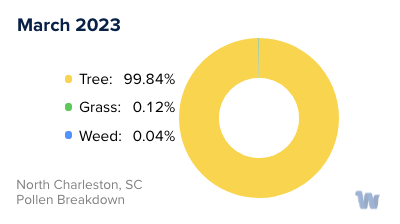
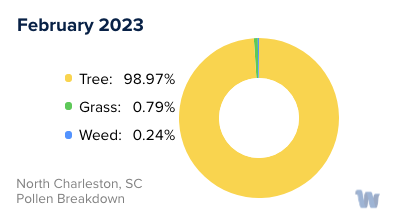
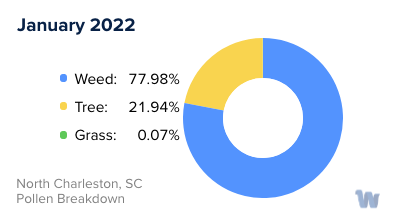
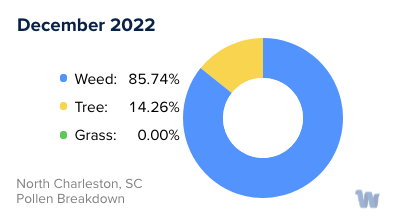
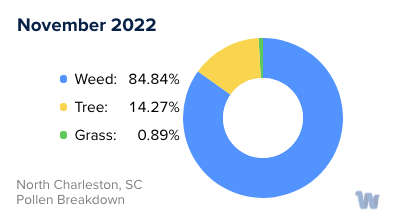
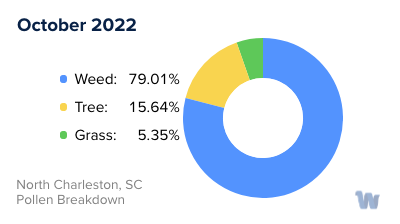
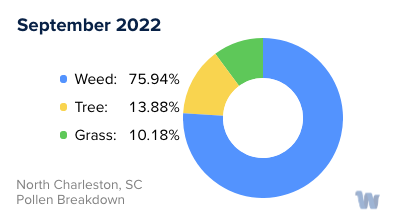
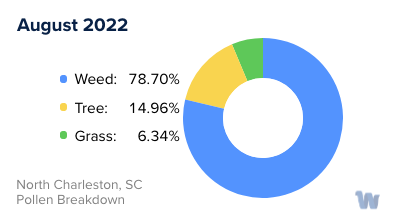
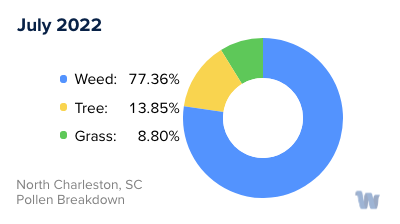
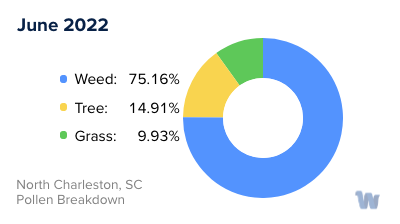
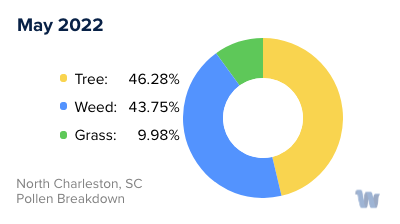
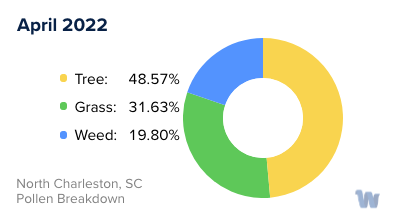
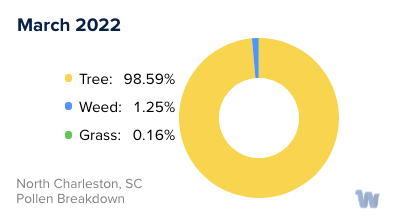
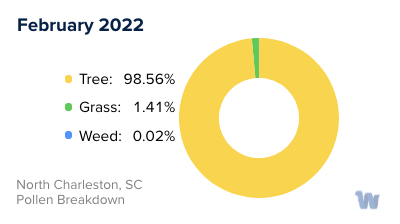
Pollen and Hay Fever in North Charleston, SC
Pollen allergies, also known as hay fever, are a prevalent concern for many residents of North Charleston, South Carolina. They are generally triggered by pollen from a variety of sources, including grasses, trees, and weeds.
The specific time of the year in which these allergies peak can depend on the type of plant causing the reaction. In South Carolina, the spring season often sees a high volume of tree pollen, triggering allergies for many individuals. As the year progresses into summer, grass pollen becomes the primary culprit. Then, as autumn rolls in, weeds take over as the chief source of pollen allergies.
The climate in South Carolina, being mild, allows the allergy season to kickstart as early as February, with a rich abundance of plant life contributing to high pollen concentrations. Particularly, residents should be aware of peak pollen counts during April, June, and September. During these months, the outdoor pollen count rises, escalating seasonal allergies.
The allergy season in South Carolina usually concludes in November, offering a brief respite to those affected. However, it's worth noting that while outdoor allergens may decrease during the winter, indoor allergens can still pose challenges for many individuals.
Several types of pollen are more commonly seen in the region due to the local flora. Some of the most common allergens include ryegrass, Bermuda grass, sweet vernal grass, ragweed, marsh elder, sagebrush, Russian thistle, and pollen from trees like pine, hickory, ash, cedar, and willow.
In summary, while living in North Charleston, South Carolina, can be a delight for nature lovers, it also means navigating the annual pollen seasons. Understanding the cycle of these allergens can help residents anticipate and prepare for their impact.

